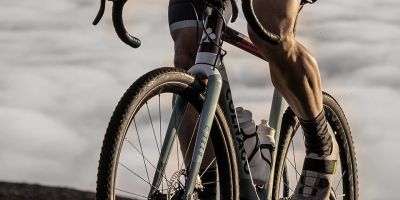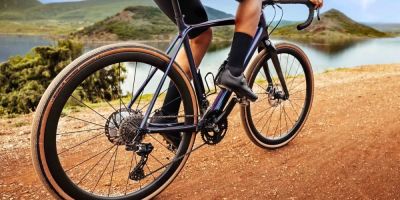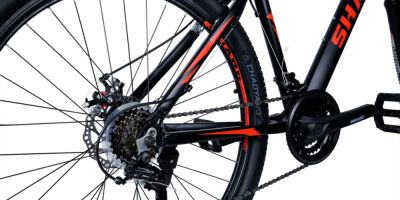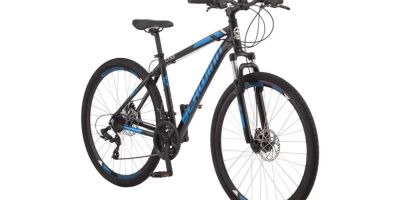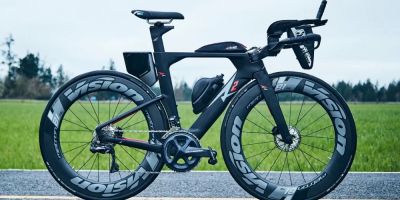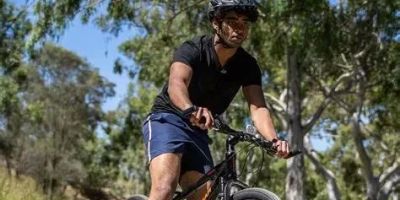Best Mountain Bikes for Rocky Trails: A Comprehensive Guide
As an avid mountain biker, I've spent countless hours riding on some of the most challenging rocky trails around. Over the years, I’ve learned that having the right bike can make a huge difference in your performance and enjoyment on these rugged paths. When I first started, I didn’t realize how important it was to choose a mountain bike specifically designed for rocky terrain. But after experiencing my first rocky trail with the wrong bike, I quickly realized that not all bikes are created equal, and some are far better suited for navigating rocks, roots, and rough terrain than others.
In this article, I’ll share my experience and walk you through the key factors to consider when choosing a mountain bike for rocky trails. I’ll also highlight some of the best mountain bikes currently available for tackling those tough, technical trails that demand a bit more from your gear. Whether you're a seasoned pro or a beginner, finding the right bike for rocky trails will enhance your ride, boost your confidence, and help you handle the most challenging terrain with ease.

Mike's Bikes of Berkeley
1824 University Ave, Berkeley, CA 94703, USA
1. Why Rocky Trails Require Specialized Mountain Bikes
When I first started riding on rocky trails, I made the mistake of using a standard mountain bike with basic components. The first time I hit a rough trail filled with sharp rocks and uneven surfaces, I quickly realized that my bike wasn’t up to the task. It felt like the bike was bouncing all over the place, and I struggled to maintain control. That’s when I learned that rocky trails require a bike built for the task. Here are some key features that are essential when choosing the right bike for rocky terrain:
- Suspension: A good suspension system is crucial when riding on rocky trails. The shock absorption will help smooth out the ride and prevent you from feeling every single bump and rock. There are two main types of suspension: hardtail (front suspension only) and full suspension (front and rear suspension). While both have their advantages, I found that full suspension offers the most comfort and control on rocky terrain, as it absorbs more shock and keeps the wheels in better contact with the ground.
- Frame Material: The frame material affects the bike’s durability and weight. For rocky trails, you’ll want a frame that’s both strong and lightweight, as it will handle the bumps and jolts of rough terrain while still being easy to maneuver. I prefer aluminum or carbon fiber frames because they offer a good balance of strength and lightness.
- Tires: The right tires make a huge difference when riding over rocks and uneven surfaces. I’ve learned that wider tires with aggressive treads provide better grip and traction, which is essential for staying in control on rocky paths. The wider surface area helps distribute your weight and minimizes the chance of getting a flat, especially when navigating sharp rocks.
2. What to Look for in a Mountain Bike for Rocky Trails
Choosing the right bike for rocky trails means considering a few key aspects that contribute to overall performance and comfort. Over time, I’ve come to prioritize the following features when selecting my bikes:
- Suspension Type: As mentioned earlier, suspension is a crucial factor when riding rocky trails. Full suspension bikes are ideal for these types of trails, as they offer both front and rear shock absorption. The rear suspension, in particular, helps absorb impacts from rocks and jumps, providing a smoother ride. If you’re on a tighter budget, a hardtail bike with front suspension can still handle rocky trails but may offer a slightly bumpier ride.
- Brakes: Rocky trails often involve steep descents, and having reliable brakes is essential for maintaining control. I always opt for hydraulic disc brakes, as they offer superior stopping power and better control, especially in wet or muddy conditions. Disc brakes are more durable and require less maintenance than traditional rim brakes.
- Geometry: The geometry of the bike plays a major role in how well you can maneuver over rocky terrain. A slack head angle and a low bottom bracket are ideal for rocky trails because they improve stability and handling. I personally prefer bikes with a more aggressive geometry, which allows for better control when descending or navigating tricky sections of the trail.
3. Best Mountain Bikes for Rocky Trails in 2025
Now that we’ve covered the essential features to look for, here are some of the best mountain bikes for rocky trails in 2025. These bikes are designed with durability, comfort, and performance in mind, making them perfect for handling rugged terrain:
- Specialized Stumpjumper EVO: The Specialized Stumpjumper EVO is one of the best bikes I’ve used for rocky trails. It’s a full-suspension bike with an adjustable geometry, allowing you to fine-tune the ride based on your preferences. The bike’s 29-inch wheels and wide tires provide excellent traction, and the rear suspension soaks up the rough terrain like a dream. This bike is great for both steep descents and technical climbs, making it perfect for diverse trail conditions.
- Santa Cruz Hightower: Santa Cruz is known for building some of the best mountain bikes on the market, and the Hightower is no exception. With 150mm of rear suspension and a slack geometry, this bike excels on rocky trails, providing a smooth ride even over the most technical sections. It’s built for riders who want a bike that can handle fast descents without sacrificing climbing ability.
- Trek Fuel EX 8: The Trek Fuel EX 8 is another fantastic full-suspension bike designed for rocky trails. Its versatile suspension system and durable aluminum frame make it an excellent option for riders who want a bike that can handle all types of terrain. I love the 120mm front and rear suspension, which provides a balanced ride that’s both smooth and responsive.
- Giant Trance X 29: The Giant Trance X 29 is a top contender for rocky trail riding. It features a durable aluminum frame, a 140mm front fork, and a 125mm rear shock, providing a plush ride on rough terrain. The large 29-inch wheels offer excellent roll-over capability, allowing you to smoothly navigate rocky surfaces without losing momentum.
4. How to Maintain Your Mountain Bike for Rocky Trails
Maintaining your mountain bike is key to ensuring it performs at its best on rocky trails. After each ride, I take the time to check a few key components to make sure everything is in good condition. Here’s what I do to keep my bike in top shape:
- Inspect the Suspension: After each ride, I check the suspension for any signs of wear or leaks. Keeping the suspension in good working order is crucial for absorbing the impacts from rocky terrain.
- Clean and Lubricate the Chain: I always clean my bike’s chain after a ride and apply lubricant to ensure smooth shifting. A well-maintained chain helps improve performance and extends the lifespan of your bike’s drivetrain.
- Check the Tires: I regularly inspect my tires for punctures or damage, especially after riding on rocky trails. Having durable, high-quality tires is essential for preventing flats and ensuring traction on rough terrain.

